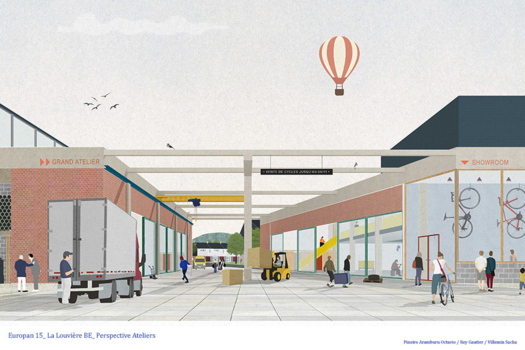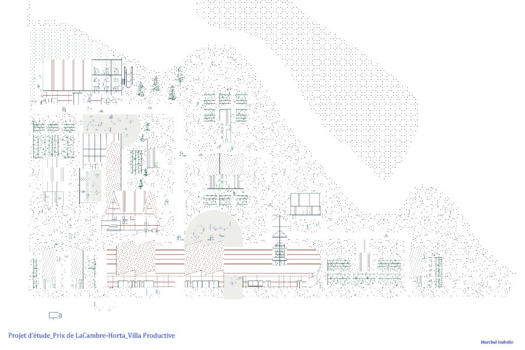Continuum
Auneuil (FR) - Runner-up

TEAM PORTRAIT
VIDEO (by the team)
INTERVIEW
Click on the images to enlarge
1. How did you form the team for the competition?
As graduates of the Faculty La Cambre Horta of Brussels, we met at this school. Europan 16, with its theme of living cities, brought us together around our visions and daily reflections, within our different offices. This seemed to us to be a great opportunity to take advantage of our complementarity and our vision of the city, by going beyond the frame of our professional practice.
2. How do you define the main issue of your project, and how did you answer on this session main topic, Living cities?
Our project questions the conditions of production, leisure and habitat in rural areas. By understanding the built and landscape structures of Auneuil, our reflection was based on the constitution of a complete, balanced and structuring ecosystem. Our approach consisted in recreating broken or non-existent continuities, at different scales, in order to give an intelligible reading of this complex territory. The setting up of interfaces and collaboration between the programmatic and architectural mixes within the site leads to a rethinking of temporalities and life sequences. The living city is not thought as zones but instead as an interdependent metabolism of each part.
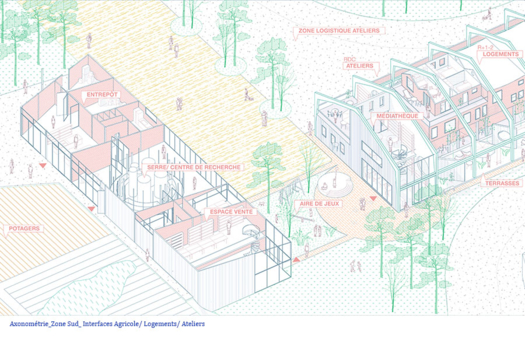
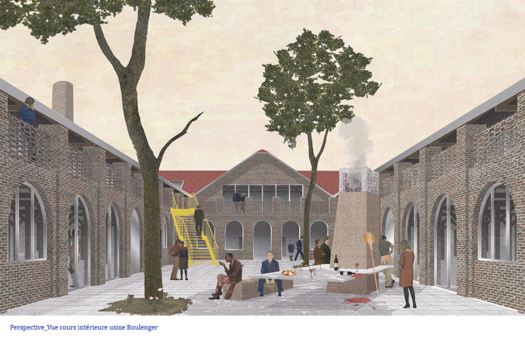
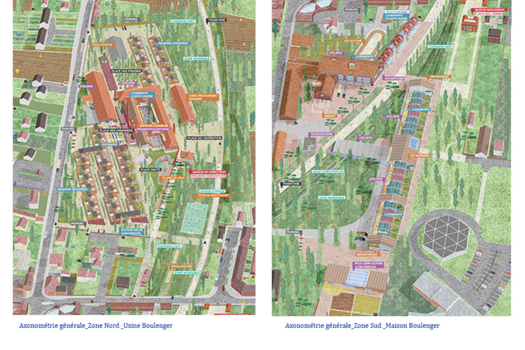
The main issue of the transformation of the Boulenger factories could not be established without an analytical reflection of this rural territory under metropolitan influence. Our project thus sought to take into account all scales. On a landscape scale, we wanted to respond to the existing risks of flooding within the watershed and to reconnect the major ecological figures by enhancing the green corridor of the former railway line. On an urban scale, we have developed built continuities that constitute the identity of the place. On an architectural scale, we have perpetuated a common language of architectural elements and materials. On a programmatic scale, we have developed the most flexible spaces possible to ensure the site's durability. These anchors were for us the essential conditions leading to a coherent and homogeneous mutation of the site.
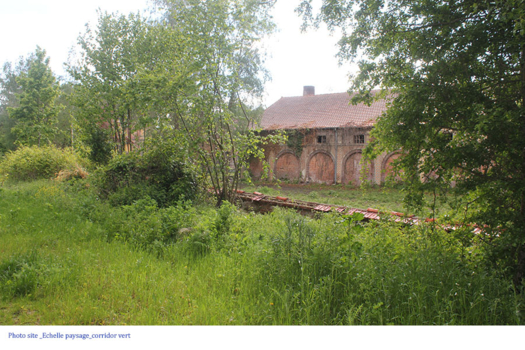
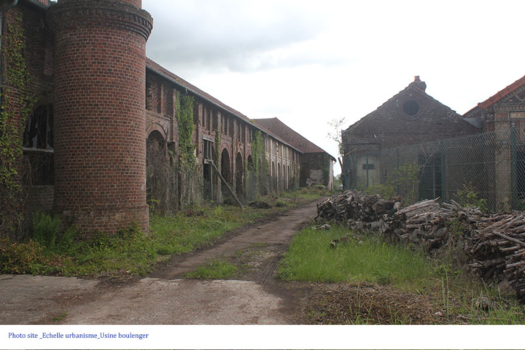
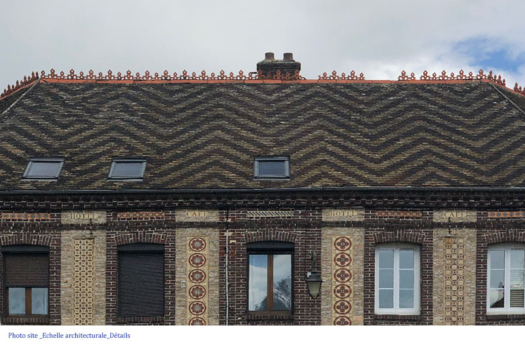
The theme of the Living City brings together important actual issues such as the reclamation of industrial wasteland or the question of living in rural areas. In these times of environmental challenges, our generation is confronted with these problems on a daily basis. These include the revitalisation of peri-urban areas and the redevelopment of secondary production sectors, which have an impact on the transformation of our way of life. We were able to draw on historical and theoretical references, seen and analysed both during our academic and professional years. These issues have been and still are part of the reflections developed by some members of our team. The plurality of our experiences and references, with attractions for various scales, allowed a better definition and understanding of the whole project.
5. Urban-architectural projects like the ones in Europan can only be implemented together with the actors through a negotiated process and in time. How did you consider this issue in your project?
Our approach is based on open and flexible mechanisms that offer levers for action and important spaces for negotiation and participation with all stakeholders. These interventions can therefore be considered independently. They go in the direction of a reasoned phasing linked to the fragile land issues of the site. In this process, the programmatic challenge of the former Boulenger factory sheds cannot be established without a close dialogue with political institutions, local businesses, research centers and citizens. Moreover, being aware that these projects can only develop through a long-term social and temporal commitment, and are subject moreover to societal and economic evolutions, we have favored an open, inclusive and evolutionary programming. This is to increase the number of possibilities, but also to offer this type of infrastructure a long-term future.
6. Is it the first time you have been awarded a prize at Europan? How could this help you in your professional career?
We are excited to be awarded for the first time at Europan. It is obviously an encouragement to continue our reflections with the actors of the town of Auneuil.
TEAM IDENTITY
Office: -
Function: architecture
Average age of the associates: 30 years old
Has your team, together or separately, already conceived or implemented some projects and/or won any competition? if yes, which ones?
Part of the team responded to the Europan E15 session at the La Louvière site in Belgium. Another member of the team received the Project Prize of the Faculty of Architecture La Cambre Horta in 2020 for his work in Critical Theory History on the issue of the Productive City.
